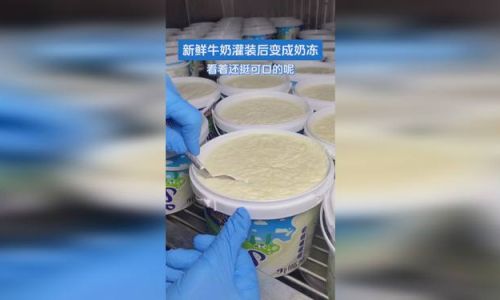Table of content
Introduction
Fresh milk, a staple in many diets worldwide, is renowned for its nutritional benefits, rich taste, and versatility in cooking and baking. However, its perishable nature often poses challenges for consumers, who strive to maintain its freshness and quality for as long as possible. Improper storage can lead to rapid spoilage, characterized by off-flavors, changes in texture, and the growth of harmful bacteria. This article delves into the intricacies of preserving fresh milk, offering comprehensive tips and strategies to ensure it stays in optimal condition until consumption. By understanding the fundamental principles of milk preservation and adopting best practices, consumers can maximize the shelf life and enjoy the full benefits of this nutritious beverage.
Understanding Milk Composition and Spoilage
Before discussing preservation methods, it’s crucial to understand the basic composition of milk and the processes that lead to its spoilage. Milk is a complex mixture containing water, fats, proteins, carbohydrates, vitamins, and minerals. Its primary components—fat, protein, and lactose (a type of sugar)—provide essential nutrients. However, milk also contains enzymes, bacteria, and other microorganisms that can influence its shelf life.
Spoilage primarily occurs due to the growth of lactic acid bacteria, which convert lactose into lactic acid, causing a drop in pH and leading to sourness. Other microorganisms, such as coliforms and yeast, can also contribute to spoilage, producing off-flavors and odors. Enzymatic activity, oxidation, and physical changes like cream separation can further degrade milk quality.
Temperature Control: The Cornerstone of Preservation
Temperature plays a pivotal role in milk preservation. Warm temperatures accelerate the growth of microorganisms and enzymatic activity, leading to rapid spoilage. Conversely, colder temperatures slow down these processes, extending milk’s shelf life. Here are key temperature-related practices for preserving fresh milk:
Refrigeration
- Immediate Refrigeration: The moment fresh milk is purchased, it should be placed in the refrigerator. Ideally, this should be done within two hours of purchase or sooner if the ambient temperature is warm.
- Consistent Temperature: The refrigerator should maintain a temperature of 4°C (39.2°F) or below. Fluctuations in temperature can promote bacterial growth and shorten milk’s shelf life.
- Proper Storage Location: Place milk on a middle or lower shelf in the refrigerator, where it’s cooler and less likely to be exposed to temperature fluctuations caused by frequent door opening.
Freezing (for Extended Storage)
While not typically recommended for daily consumption due to texture changes upon thawing, freezing milk can be a viable option for long-term storage.

- Preparation: Milk should be poured into freezer-safe containers, leaving some headspace to allow for expansion during freezing.
- Freezing Temperature: Aim for a freezer temperature of -18°C (0°F) or below.
- Thawing: Thaw frozen milk in the refrigerator, which can take several hours to a day depending on the quantity. Avoid thawing at room temperature or in hot water, which can promote bacterial growth.
Handling and Packaging
Proper handling and packaging are equally important in preserving milk’s freshness. Here are some key considerations:
Original Packaging
- Use As Is: If possible, keep milk in its original container, which is designed to protect against light, oxygen, and contamination.
- Re-sealing: If the original packaging is opened, ensure it is resealed tightly to minimize exposure to air.
Transfer to Clean Containers
- Cleanliness: If transferring milk to another container, ensure it is thoroughly cleaned and sanitized to prevent contamination.
- Material Choice: Opt for glass or BPA-free plastic containers that do not react with milk components or leach harmful chemicals.
- Air-tight Sealing: Use air-tight lids to prevent oxygen exposure, which can oxidize fats and degrade milk quality.
Light and Oxygen Exposure
Light and oxygen are significant enemies of milk freshness. Here’s how to minimize their impact:

Light Protection
- Opaque Containers: Store milk in opaque containers or wrap transparent ones in dark materials to block out light.
- Avoid Direct Sunlight: Keep milk away from windows and other sources of direct sunlight.
Oxygen Management
- Minimize Exposure: As mentioned, use air-tight containers to limit oxygen exposure.
- Vacuum Sealing: For extended storage, consider vacuum sealing milk to further reduce oxygen contact.
Hygiene and Contamination Prevention
Hygiene is paramount in milk preservation. Contamination from dirt, bacteria, or other contaminants can drastically shorten milk’s shelf life and pose health risks.
Hand Hygiene
- Wash Hands: Always wash hands thoroughly before handling milk or its containers.
- Clean Utensils: Use clean utensils for scooping or pouring milk to avoid cross-contamination.
Cleaning and Sanitizing Surfaces
- Regular Cleaning: Wipe down refrigerator shelves and countertops regularly with a mild disinfectant.
- Separate Storage: Keep milk away from raw meats, poultry, and seafood to prevent cross-contamination.
Monitoring Milk Quality
Regularly monitoring milk quality can help catch signs of spoilage early, ensuring safe consumption.

Visual Inspection
- Appearance: Fresh milk should have a uniform white color with no visible clumps or sediment.
- Consistency: It should pour smoothly without separation or curdling.
Sensory Evaluation
- Smell: Fresh milk has a mild, sweet aroma. Avoid consuming milk with a sour or off-putting smell.
- Taste: A small taste test can confirm if milk is still fresh. Discard milk if it tastes sour or has an unusual flavor.
Date Tracking
- Use-by Dates: While not an absolute indicator of spoilage, use-by dates provide a general guideline for milk freshness.
- First-in, First-out: Rotate milk stock, using older batches first to minimize waste.
Special Considerations for Different Milk Types
Different types of milk—such as whole, skimmed, homogenized, and ultrapasteurized—have varying shelf lives and storage requirements.
Homogenized Milk
- Cream Separation: Homogenization prevents cream separation, but it doesn’t affect milk’s overall shelf life. Store as per regular milk guidelines.
Ultrapasteurized Milk
- Extended Shelf Life: Ultrapasteurization involves higher temperatures and pressures, extending milk’s shelf life to several weeks even when refrigerated. However, once opened, it should be consumed promptly.
Raw Milk
- Caution: Raw milk, which has not undergone pasteurization, carries a higher risk of contamination. If choosing to consume raw milk, source it from a reputable farm and refrigerate immediately. Its shelf life is shorter than pasteurized milk.
Plant-based Milks
- Storage Variations: Alternatives like almond, soy, oat, and coconut milk have different compositions and storage requirements. Follow the manufacturer’s instructions for optimal preservation.
Conclusion
Preserving fresh milk to prevent spoilage involves a combination of temperature control, proper handling, packaging, hygiene, and regular quality checks. By adhering to these guidelines, consumers can ensure their milk stays fresh, nutritious, and safe for consumption. Remember, the key to successful milk preservation lies in consistency—consistently maintaining optimal storage conditions and regularly monitoring milk quality. With these practices in place, you can enjoy the full benefits of fresh milk, knowing it’s at its best until the last drop.






0 comments